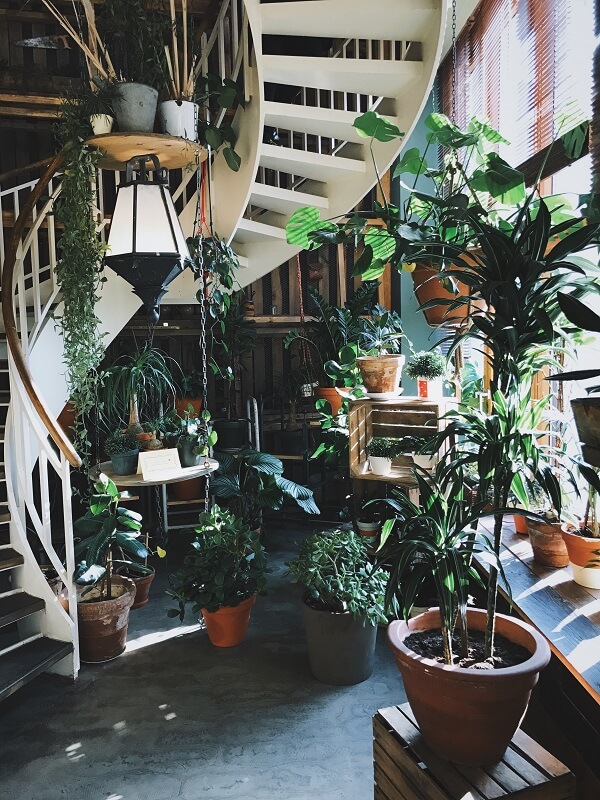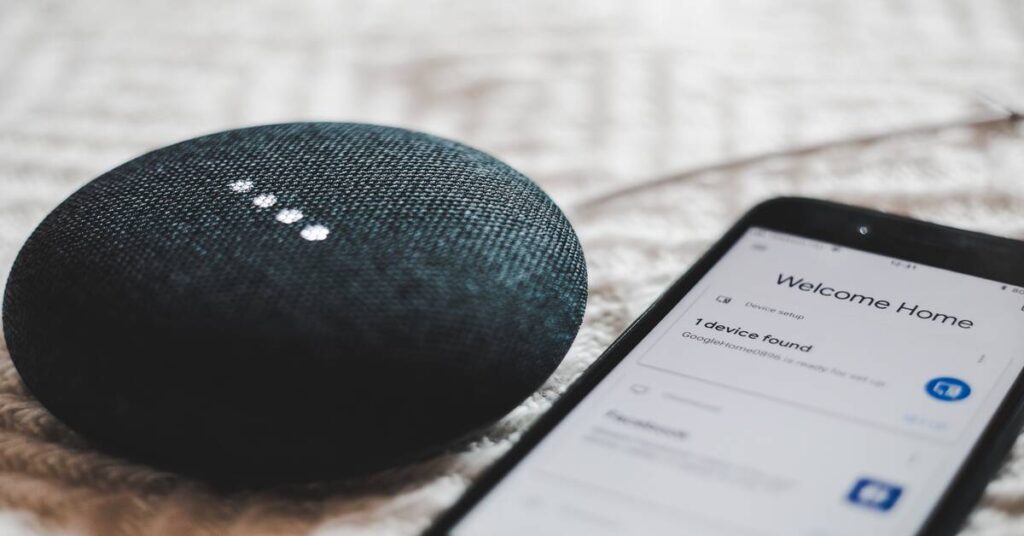Interior design trends are constantly evolving, and staying up-to-date with the latest trends can help homeowners create a modern, stylish living space. Here are some of the latest interior design trends that are gaining popularity in home interiors:
1. Color Palettes
Color palettes are an important aspect of interior design, as they set the tone and mood for a space. These colors add a sense of warmth and comfort to any room, and pair well with natural materials like wood and stone. Here are some of the latest color palettes that are trending in interior design:
• Earthy Tones: Earthy tones like terracotta, olive green, and mustard yellow are becoming increasingly popular in interior design. These warm, natural colors can add a sense of comfort and relaxation to a space.
• Pastels: Soft pastel colors like blush pink, pale blue, and mint green are a popular trend in interior design. These colors can create a calming and soothing atmosphere in a room.

• Monochrome: Monochromatic color schemes, where different shades of the same color are used, are a popular trend in interior design. This creates a cohesive and harmonious look in a space.
• Bold Colors: Bold colors like bright yellow, deep blue, and emerald green are becoming increasingly popular in interior design. These colors can add a sense of energy and excitement to a space.
• Neutrals: Neutrals like beige, grey, and white continue to be popular in interior design. These colors can create a clean and minimalistic look, and allow other elements in the space to stand out.
• Jewel Tones: Rich, jewel-toned colors like ruby red, sapphire blue, and emerald green are a popular trend in interior design. These colors can add a sense of luxury and sophistication to a space.
When choosing a color palette for a space, it’s important to consider the function of the room, as well as the mood and atmosphere you want to create. Using different shades of the same color can create depth and interest, while pairing bold colors with neutrals can create a balanced and cohesive look. By staying up-to-date with the latest color trends, you can create a space that feels modern, stylish, and comfortable.
2. Natural Materials
Natural materials like wood, stone, and jute are gaining popularity in home interiors. Using natural materials can help create a sense of calmness and relaxation in a space, and add an element of warmth and texture. Here are some of the most popular natural materials used in interior design:
• Wood: Wood is a versatile and timeless material that can be used in a variety of ways in interior design. From hardwood floors to wood furniture, wood can add a sense of warmth and texture to a space.
• Stone: Natural stone like marble, granite, and slate is another popular material in interior design. Stone can be used for countertops, backsplashes, and flooring, and can add a sense of luxury and sophistication to a space.
• Jute: Jute is a natural fiber that is often used in rugs and upholstery. It has a rough, natural texture that can add an element of warmth and coziness to a space.

• Bamboo: Bamboo is a sustainable and eco-friendly material that is becoming increasingly popular in interior design. It can be used for flooring, furniture, and even lighting fixtures.
• Cork: Cork is a sustainable material that is often used for flooring, as well as wall coverings and furniture. It has a natural texture and provides insulation, making it a popular choice for eco-conscious homeowners.
• Leather: Leather is a classic material that can add a sense of luxury and sophistication to a space. From leather sofas to leather accent chairs, this material can create a timeless look in any room.
When incorporating natural materials into interior design, it’s important to consider the overall style and mood of the space. Natural materials can be paired with other materials like metal and glass to create a modern and contemporary look, or used in a more rustic or traditional style for a cozy and inviting feel. By using natural materials in your interior design, you can create a space that feels both stylish and comfortable.
3. Sustainability
With more people becoming aware of their carbon footprint, sustainability is an important trend in interior design. Using sustainable materials like bamboo, recycled wood, and natural fibers like linen and cotton can help reduce environmental impact. Here are some of the ways sustainability is being incorporated into interior design:
 • Reclaimed materials: Reclaimed materials like wood, metal, and brick are becoming increasingly popular in interior design. These materials can add character and texture to a space, while also reducing waste and promoting sustainability.
• Reclaimed materials: Reclaimed materials like wood, metal, and brick are becoming increasingly popular in interior design. These materials can add character and texture to a space, while also reducing waste and promoting sustainability.
• Energy-efficient lighting: Energy-efficient lighting like LED bulbs are a popular trend in interior design. They use less energy than traditional lighting and can last longer, reducing waste and lowering energy bills.
• Sustainable furniture: Sustainable furniture made from eco-friendly materials like bamboo, recycled plastic, and reclaimed wood is becoming more widely available. These pieces are not only better for the environment, but they can also add a unique and stylish touch to a space.
• Natural fabrics: Natural fabrics like organic cotton, linen, and hemp are a popular trend in interior design. These fabrics are sustainable and eco-friendly, and they can create a sense of warmth and comfort in a space.
• Biophilic design: Biophilic design is a trend in interior design that focuses on incorporating natural elements like plants and natural light into a space. This can create a more natural and calming environment, while also promoting sustainability by reducing the need for artificial lighting and air filtration.
• Low VOC paints and finishes: Low VOC (volatile organic compound) paints and finishes are a popular trend in interior design. These products are less harmful to the environment and to human health, as they emit fewer harmful chemicals than traditional paints and finishes.
By incorporating sustainable design elements into interior design, you can create a space that is not only stylish and comfortable but also eco-friendly and socially responsible. This trend is gaining momentum as people become more conscious of their impact on the environment, and it’s expected to continue to grow in popularity in the coming years.
4. Vintage and Retro Styles
Vintage and retro styles have made a comeback in interior design in recent years, as people seek to add a touch of nostalgia and personality to their spaces. Think velvet sofas, rattan chairs, and shaggy rugs. Here are some of the key elements of vintage and retro styles in interior design:
• Bold patterns: Vintage and retro styles often feature bold, graphic patterns in bright colors. These patterns can be used in wallpaper, upholstery, and accent pieces to add a playful and energetic vibe to a space.
• Mid-century modern furniture: Mid-century modern furniture, which was popular in the 1950s and 60s, is a hallmark of vintage and retro interior design. Pieces like Eames chairs, Saarinen tables, and Danish teak furniture are popular choices for creating a retro look.

• Vintage accessories: Adding vintage accessories like old telephones, radios, and record players can create a sense of nostalgia and personality in a space. These pieces can be used as decorative accents or as functional pieces that add to the overall aesthetic.
• Retro color palettes: Retro color palettes are often bright and playful, featuring colors like mustard yellow, burnt orange, and avocado green. These colors can be used in paint, textiles, and accessories to create a fun and lively atmosphere.
• Art deco accents: Art deco was a popular style in the 1920s and 30s and is often incorporated into vintage and retro interior design. Art deco accents like geometric patterns, metallic finishes, and bold lines can add a touch of glamour and sophistication to a space.
When incorporating vintage and retro styles into interior design, it’s important to strike a balance between old and new. Mixing vintage and retro elements with contemporary pieces can create a look that feels fresh and modern, while still paying homage to the past. By using bold patterns, mid-century modern furniture, vintage accessories, retro color palettes, and art deco accents, you can create a space that feels both stylish and nostalgic.
5. Biophilic Design
Biophilic design is all about bringing nature indoors. This trend incorporates natural materials like wood and stone, as well as indoor plants and greenery. It has been shown to improve mood, productivity, and overall well-being. Here are some of the key elements of biophilic design:
• Plants: Plants are a key element of biophilic design. Adding plants to a space can help to purify the air, reduce stress levels, and improve productivity. They also add a touch of greenery and natural beauty to a space.
• Natural light: Natural light is an important aspect of biophilic design. Large windows, skylights, and other sources of natural light can help to improve mood, increase productivity, and reduce energy costs.
• Natural materials: Using natural materials like wood, stone, and bamboo can help to create a sense of connection to nature. These materials add texture and warmth to a space and can be used in flooring, furniture, and other decorative elements.
• Water features: Incorporating water features like fountains and indoor ponds can help to create a calming and peaceful atmosphere in a space. They also add a natural element that can help to reduce stress and improve mood.
• Views of nature: Having views of nature, whether it’s through windows or with artwork, can help to create a sense of connection to the natural world. Views of gardens, parks, or other natural landscapes can be particularly effective.
• Natural colors: Using natural colors like greens, blues, and browns can help to create a calming and relaxing atmosphere in a space. These colors can be used in paint, textiles, and other decorative elements.
By incorporating biophilic design elements into interior design, you can create a space that is not only beautiful and functional but also promotes health, wellbeing, and productivity. This trend is gaining momentum as people become more aware of the benefits of connecting with nature and is expected to continue to grow in popularity in the coming years.
6. Minimalism
The main idea behind minimalism is to create a space that is functional, clean, and clutter-free. The focus is on quality over quantity, with a few carefully chosen pieces making a big impact in a space. Here are some of the key elements of minimalism in interior design:
• Neutral color palette: Minimalist interiors typically use a neutral color palette, such as white, beige, or grey. These colors create a sense of calm and simplicity in the space.
• Simple and functional furniture: Furniture in a minimalist interior is typically simple and functional, with clean lines and minimal ornamentation. Pieces are chosen for their practicality rather than their decorative value.

• Limited decor: Minimalist interiors have a limited amount of decor. Any decorative pieces that are used are chosen for their simplicity and beauty. This could be a piece of art, a vase of flowers, or a sculptural object.
• Open space: Minimalist interiors are characterized by open space. The goal is to create a sense of airiness and lightness, which can be achieved by minimizing clutter and keeping furniture to a minimum.
• Quality over quantity: In a minimalist interior, quality is prioritized over quantity. Instead of filling a space with lots of cheap furniture and decor, the goal is to choose a few high-quality pieces that will stand the test of time.
• Clean lines and geometric shapes: Clean lines and geometric shapes are a hallmark of minimalist design. Furniture and decor often feature simple geometric shapes, such as squares, rectangles, and circles.
Minimalism is a versatile design trend that can work in a variety of spaces, from small apartments to large homes. It can be particularly effective in small spaces, as it helps to create a sense of openness and lightness that can make a space feel larger than it is.
7. Bold Accents
Bold accents in interior design refer to the use of eye-catching and striking elements in a space to create a visual impact. These bold accents can be anything from colorful accessories to statement furniture pieces that add an element of drama, energy and excitement to a space. Here are some of the key elements of bold accents in interior design:
• Color: Bold colors are often used as accents in interior design. This could be a bright orange sofa, a vibrant green rug, or a bold blue accent wall. The key is to use color in a way that is impactful without overwhelming the space.
• Pattern: Bold patterns can also be used as accents in interior design. This could be a bold geometric print on a rug, a floral wallpaper on an accent wall, or a patterned throw pillow on a neutral sofa.
• Texture: Using texture as an accent in interior design can add depth and interest to a space. This could be a textured accent wall, a shaggy rug, or a rough-hewn wood coffee table.
• Artwork: Bold artwork can also be used as an accent in interior design. This could be a large-scale abstract painting, a gallery wall of eclectic prints, or a bold sculpture that serves as a focal point in a room.
• Lighting: Lighting can also be used as a bold accent in interior design. This could be a sculptural pendant light, a bold floor lamp, or a set of colorful table lamps that add a pop of color to a space.
By incorporating bold accents into interior design, you can create a space that is visually interesting and dynamic. The key is to use bold accents in a way that complements the overall design of the space and doesn’t overwhelm it. Bold accents can be particularly effective in spaces that are otherwise neutral, as they can add a much-needed pop of color or texture.
Conclusion
Interior design trends are constantly evolving, and it can be challenging to stay up-to-date with the latest styles and ideas. From natural materials and biophilic design to bold accents and vintage styles, there is a wide range of trends to choose from when it comes to designing your home. Each trend has its own unique characteristics and benefits, and by incorporating these trends into your design, you can create a space that is not only aesthetically pleasing but also functional and sustainable.
Color palettes, materials, and decor styles all play an important role in interior design, and by choosing the right combinations, you can create a space that reflects your personal style and taste. Whether you prefer minimalist design, bold accents, or vintage styles, there is a trend that will suit your needs and preferences.
Overall, the key to successful interior design is to strike a balance between form and function, aesthetics and practicality, and style and sustainability. By keeping these principles in mind and staying up-to-date with the latest trends, you can create a space that is both beautiful and functional, and that reflects your unique personality and style.




